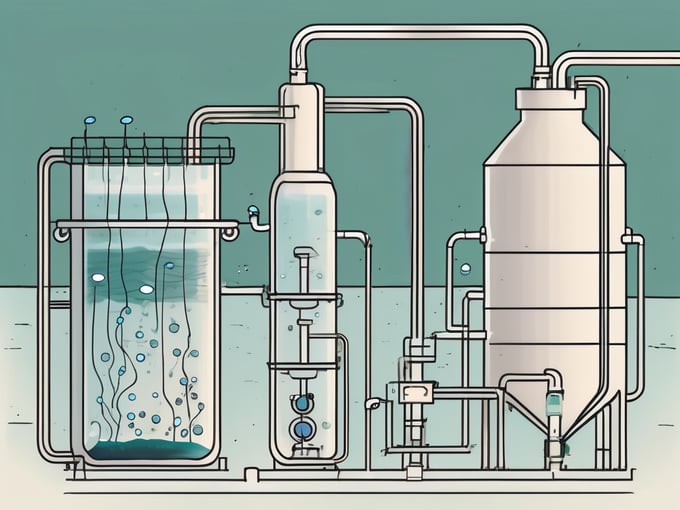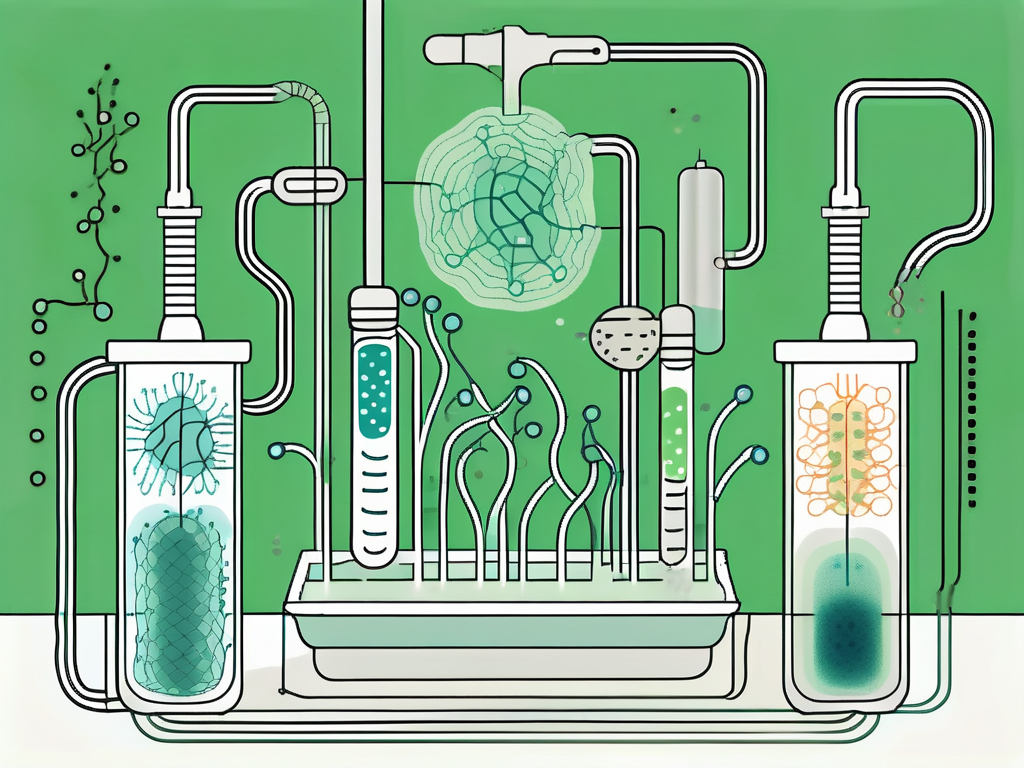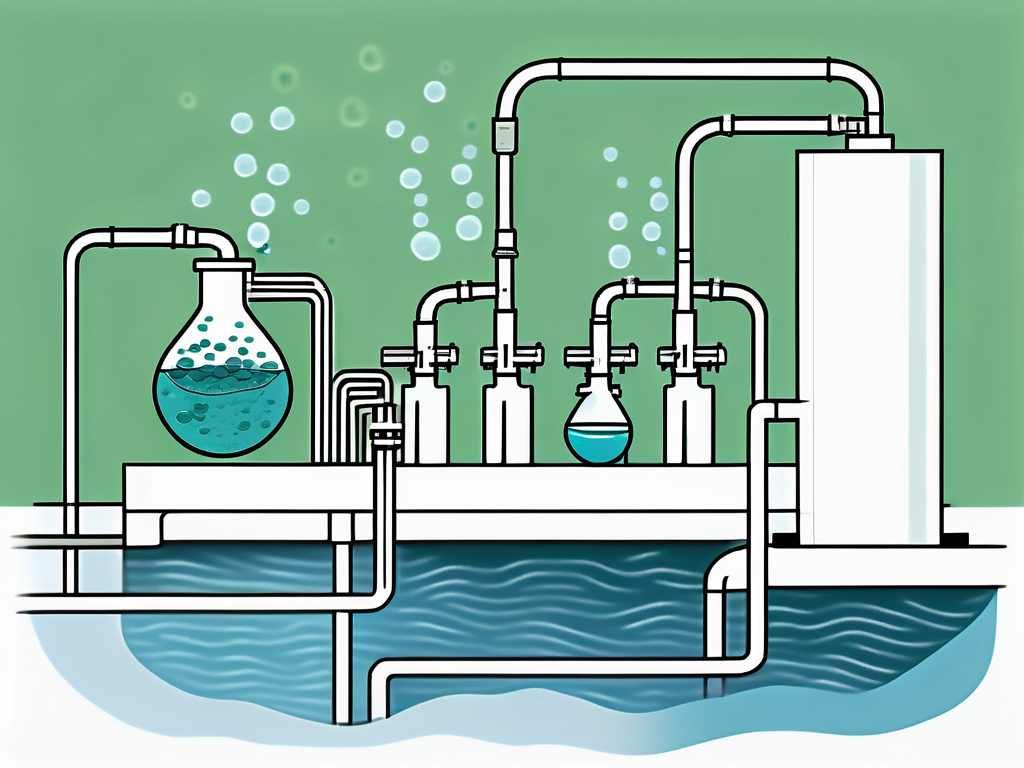
Quorum Sensing: Wastewater Treatment Explained
In the realm of wastewater treatment, one of the most fascinating and complex biological phenomena is Quorum Sensing (QS). This process, which is a form of bacterial communication, plays a crucial role in the degradation and treatment of wastewater. Understanding QS is vital for engineers, scientists, and professionals in the wastewater treatment industry, as it can significantly impact the efficiency and effectiveness of treatment processes.
Quorum sensing is a system of stimulus and response correlated to population density. Many species of bacteria use quorum sensing to coordinate gene expression according to the density of their local population. In similar fashion, some social insects use quorum sensing to determine where to nest. In addition to its function in biological systems, quorum sensing has several practical applications for computing and robotics.
Understanding Quorum Sensing
Quorum Sensing (QS) is a process used by bacteria to communicate and coordinate behavior based on population density. When the number of bacteria in a certain area reaches a specific threshold, or 'quorum', the bacteria can collectively change their behavior. This is achieved through the production and detection of extracellular signaling molecules, known as autoinducers.

These autoinducers accumulate in the environment as the bacterial population grows. Once a critical concentration is reached, the autoinducers can bind to specific receptors in the bacteria, triggering changes in gene expression. This can lead to a wide range of coordinated behaviors, such as bioluminescence, virulence, biofilm formation, and more.
The Role of Autoinducers
Autoinducers are the key players in quorum sensing. They are small, diffusible molecules that are produced and released by bacteria. The type and structure of autoinducers can vary greatly between different species of bacteria, and even between different strains of the same species.
When the concentration of autoinducers in the environment reaches a certain threshold, they can bind to specific receptor proteins in the bacteria. This binding triggers a signal transduction pathway, leading to changes in gene expression. The result is a coordinated response that allows the bacteria to adapt to their environment and perform complex tasks that would be impossible for a single bacterium to achieve alone.
Types of Quorum Sensing Systems
There are several different types of quorum sensing systems, each with its own unique set of autoinducers and receptors. The two most well-known systems are the LuxI/LuxR system in Gram-negative bacteria and the Agr system in Gram-positive bacteria.
The LuxI/LuxR system involves the production of acyl-homoserine lactone (AHL) autoinducers by the LuxI protein. These autoinducers can then bind to the LuxR receptor protein, triggering changes in gene expression. The Agr system, on the other hand, uses peptide autoinducers that are detected by a two-component signal transduction system.
Quorum Sensing in Wastewater Treatment
In the context of wastewater treatment, quorum sensing plays a crucial role in the formation and maintenance of biofilms. Biofilms are communities of bacteria that adhere to surfaces and are encased in a matrix of extracellular polymeric substances. They are a common feature in wastewater treatment systems, where they contribute to the degradation of organic matter.
Quorum sensing allows the bacteria in biofilms to coordinate their behavior and adapt to changes in their environment. For example, when nutrients become scarce, the bacteria can use quorum sensing to initiate the production of extracellular enzymes that can break down complex organic compounds. This allows the bacteria to access new sources of nutrients and continue their growth.
Implications for Wastewater Treatment
The understanding and manipulation of quorum sensing systems could have significant implications for wastewater treatment. By controlling the behavior of bacteria, it may be possible to enhance the efficiency of biofilm-based treatment processes.
For example, by promoting the formation of biofilms, it may be possible to increase the rate of organic matter degradation. Conversely, by inhibiting quorum sensing, it may be possible to prevent the formation of biofilms in situations where they are undesirable, such as in the case of biofouling.
Challenges and Future Directions
Despite the potential benefits of manipulating quorum sensing in wastewater treatment, there are also significant challenges. One of the main challenges is the complexity of quorum sensing systems. Each species of bacteria has its own unique set of autoinducers and receptors, and these can interact in complex ways.
Furthermore, the behavior of bacteria can be influenced by a wide range of environmental factors, including temperature, pH, nutrient availability, and the presence of other bacteria. This makes it difficult to predict and control the behavior of bacteria in real-world wastewater treatment systems.
Conclusion
Quorum sensing is a fascinating and complex biological phenomenon that plays a crucial role in wastewater treatment. By allowing bacteria to communicate and coordinate their behavior, quorum sensing can significantly impact the efficiency and effectiveness of treatment processes.

While there are significant challenges associated with manipulating quorum sensing in real-world systems, the potential benefits are substantial. With further research and development, it may be possible to harness the power of quorum sensing to improve the efficiency and sustainability of wastewater treatment processes.



